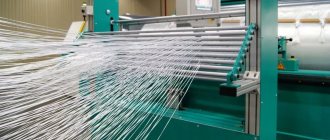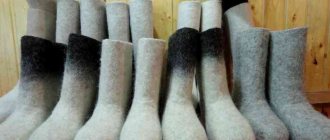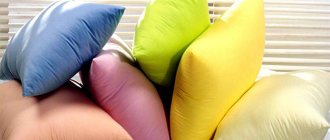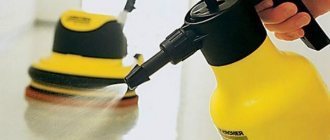How to wash a membrane in a washing machine How to wash things made from a membrane in a machine How to wash by hand How to wash a membrane jacket: drying and aftercare Why do you need impregnation for the membrane
High-quality membrane fabric is durable and comfortable. The synthetic fibers of the material are covered with a polymer film, which simultaneously allows the skin to breathe and keeps the cold out. In such a jacket you will not freeze, but you will not sweat inside, even if the physical activity is serious.
This fabric is used to make ski jackets, trekking suits, children's overalls, down jackets and other specialized clothing for sports and everyday life. High-quality things from the material are produced by such companies as Krokid and others.
Membrane clothing must be washed very carefully. There are several important nuances of washing at home, but you should not think that it is better not to wash such things at all. This is also wrong. In addition, a good wash will help increase the shelf life of the product.
Is the membrane washable?
It is necessary, and absolutely necessary! But before washing, familiarize yourself with the type of membrane and how to care for it. Different means are used for different membranes. Directions are on the tag. You should not engage in “self-medication”, just follow the manufacturer’s advice.
Attention!
Avoid fanatical washing. As with any other clothing, products made from membrane materials lose their protective properties when washed too often, become stiff and less durable. Wash your equipment as soon as it gets dirty.
What is prohibited?
Habitual actions when washing outerwear can destroy the membrane, so it is necessary to clearly indicate the manipulations that are prohibited:
the use of conventional washing powders clogs the holes with undissolved particles;- washing with chlorine-containing products destroys the structure of the material;
- intensive twisting and wringing lead to stretching of the product and the appearance of micro-tears;
- exposure to temperatures above 40⁰C (hot water and a hot iron) sticks the pores together.
How can you wash the membrane?
For high-quality and effective washing, it is recommended to use special liquid detergents. Stores that sell equipment and workwear made from membrane fabrics always have the appropriate products. They are usually offered at the checkout, and they immediately select the option for your membrane. The best option not to make a mistake is to buy everything you need at once.
- Membrane cleaners are mostly universal, but still read the label carefully before purchasing. Among the recommended manufacturers it is worth mentioning: Nikwax, Grangers, Holmenkol, Collonil.
- Impregnations are more picky; the choice depends on the material, insulation and other details. Some impregnations are initially intended only for backpacks or only for awnings, but not for clothing. If in doubt, ask a consultant for help.
Do not use conditioners, stain removers, antistatic agents or other additional products under any circumstances. Even if your favorite jacket has an unpleasant stain, there is no need to pour bleach on it. This way you will only damage the structure of the membrane; it will no longer be possible to restore it.
Attention!
Do not wash membrane materials with conventional means: loose powders, liquid powders, soap! Even the mark “for delicate washing” should not confuse you. You either won’t achieve any effect at all, or you risk damaging the membrane by clogging micropores and only worsening steam removal.
Handwash
Cleaning by hand is the gentlest way to remove dirt . No pre-soaking is required before hand washing. The jacket washes perfectly without additional manipulation.
Step-by-step algorithm:
Prepare your jacket.- Fill the bathroom with warm water no higher than 40⁰C.
- Dilute the detergent.
- Dip the item into the prepared solution.
- Gently rub the contaminated areas by hand or with a brush.
- Rinse thoroughly under running water.
It is strictly forbidden to unscrew the membrane, so the liquid is allowed to drain freely. The jacket is then wrapped in a terry towel to remove excess moisture.
How to wash a membrane in a washing machine
Let's start with the fact that machine washing is generally preferable to hand washing. The drum distributes the load on the product more evenly, which will have a positive effect on its safety. For example, hand washing often affects taped seams, which lose their tightness as a result of intense friction.
Before you start washing, make sure that there are no traces of detergent left in the machine from previous washes. This is especially true for bleaches and stain removers, as well as products containing fluorine or chlorine.
Although the product is used quite economically, it is more expensive than regular powder. To avoid spending too much, you can wash several membrane items at once, for example, a jacket and trousers from one suit.
Before you begin, fasten all available fasteners: zippers, Velcro, buttons, etc.
Detergent GRANGERS Down Wash&Repel 2 in 1 300 ml
More details
GRANGERS Performance Wash 1000 ml
More details
GRANGERS Clothing Care Kit
More details
What mode should I use to wash the membrane?
Set the washing cycle to a gentle cycle at a temperature no higher than 30-40°C with low speed and double rinsing. Suitable modes: synthetics, delicate wash, sports. If the soiling is serious, use the pre-wash mode.
Avoid washing at temperatures higher than those indicated on the product tag. Overheating can damage the membrane. This is also why such things should never be boiled.
Set a small number of spin speeds or abandon it altogether. Be prepared that even after spinning, water will drip from the clothes; this is normal for membrane materials.
Double rinsing is a very important point, try not to miss it. Although membrane products are designed in such a way as not to clog the porous structure, not everything is washed out the first time. In order for the membrane to maintain its breathability, you need to rinse everything thoroughly twice.
Preparatory stage
Membrane fabric has a porous structure and is called “breathable”. Sweat from the surface of the human body comes out freely, without creating a greenhouse effect inside.
An indicator of contamination is the heaviness of the jacket: it begins to absorb moisture. So, the time has come to wash your favorite clothes.
Membrane fabric is quite capricious, so manufacturers always attach a tag to the lining indicating the main points of use.
Before washing, you should carefully study the icons:
- temperature regime;
- use of a washing machine;
- possibility of ironing.
The main rule is to take care of the jacket. Individual stains can be easily removed with a soft brush and soapy water . It is worth carefully walking over the dirt, and then drying the product by hanging it on a hanger.
If you need to wash the entire item, do it separately from other outerwear so as not to damage the delicate fabric.
Preliminary preparation:
- inspect the jacket, identify stains and defects;
- remove all items from pockets;
- remove fur parts;
- close the zippers;
- fasten the buttons.
When it is impossible to unfasten fur accessories (for example, pompoms), you should place them in a plastic bag and carefully tie the edges. The fittings are protected with adhesive tape, pasting it on top in several layers.
Restoring the impregnation of membrane clothing
The best impregnation option is factory-made. Homemade impregnation, no matter how hard you try, is not as uniform and of high quality. At the same time, there are no restrictions on home processing; feel free to process your equipment as needed.
Important condition:
impregnation treatment occurs only after washing and before the clothes dry. There are two options for the product: spray and rinse.
- Spray impregnation is a simpler option, and in this case the concentration of the product is higher. Just spray the outer layer, trying to do it evenly. Afterwards the equipment is left for final drying.
- Impregnation-rinse aid is a more complex and time-consuming option. You need to dissolve the product in a basin and leave the clothes to soak for a while (exact directions and instructions are on the packaging). Or pour the product into the rinse aid compartment and run the machine again. The option is not bad, the product is distributed more evenly than in the case of a spray, but when diluted with water, its concentration decreases.
Is it possible to iron?
A properly dried item does not require ironing.
The damp fabric, being in a vertical position, smooths out on its own.
Using a hot iron will damage the synthetic layer and all the benefits of the membrane will be lost.
If the jacket is wrinkled for any reason, and you can’t do without ironing, you can use a steam generator . Another option: iron the product with a warm iron through several layers of gauze.
How to dry membrane clothes
To dry washed and treated clothes, do not use dryers, batteries, heaters, and avoid drying near an open fire. Choose a warm room, open the window slightly for better air circulation, hang the product on a hanger and leave it like that until completely dry.
Sometimes it is recommended to dry it in a horizontal position, that is, straighten it and place it on a towel.
If there is a corresponding mark on the tag, then already dry clothes can be placed in the dryer for 15-20 minutes. This will help to better record the results of washing and treatment with a DWR product. If there are no marks, then avoid using dryers altogether.
Features of the material
Membrane fabric is a breathable material made of synthetic fiber, which is characterized by a large number of tiny holes and is characterized by:
- Waterproof. The higher the number of this indicator, the better the membrane material resists moisture penetration. A coefficient of 10,000 indicates that the fabric will not get wet in heavy rain.
- Vapor permeability. The structure of the synthetic fabric is such that it allows steam to escape, removing excess heat and moisture from the body. This provides comfort during high physical activity in cold weather. The higher the vapor permeability index, the better the quality of the material.
- Windproof. The membrane reliably protects from wind.
The clothes use two-layer and three-layer membrane fabrics. The outer layer consists of ordinary matter, the inner layer is made of membrane fabric. There may also be a bottom layer of knitted mesh.
The membrane itself is not insulation; it creates comfort provided that a person moves intensively, generating heat. Therefore, a winter envelope for a newborn, clothes for a sedentary child, in addition to the membrane, must contain vapor-permeable synthetic insulation.
Treatment with protective agents
To ensure that clothing for fishing and hunting does not become less comfortable over time and does not lose its water-repellent properties, manufacturers recommend applying special impregnation agents to it. Impregnations containing Teflon or silicone create a film that repels water and causes it to roll off the surface of things.
Manufacturers of impregnations produce compositions in the form of sprays and in the form of a liquid that must be added to the water when rinsing.
- Sprays
.
Advantages
: they are easy to apply and dry quickly.
The disadvantage
is uneven spraying in different areas. - Liquid impregnations
.
The advantage
is uniform application.
The disadvantage
is the high consumption of substance. Products are treated with impregnations after cleaning or washing. You can apply the substance to dry items (spray).











